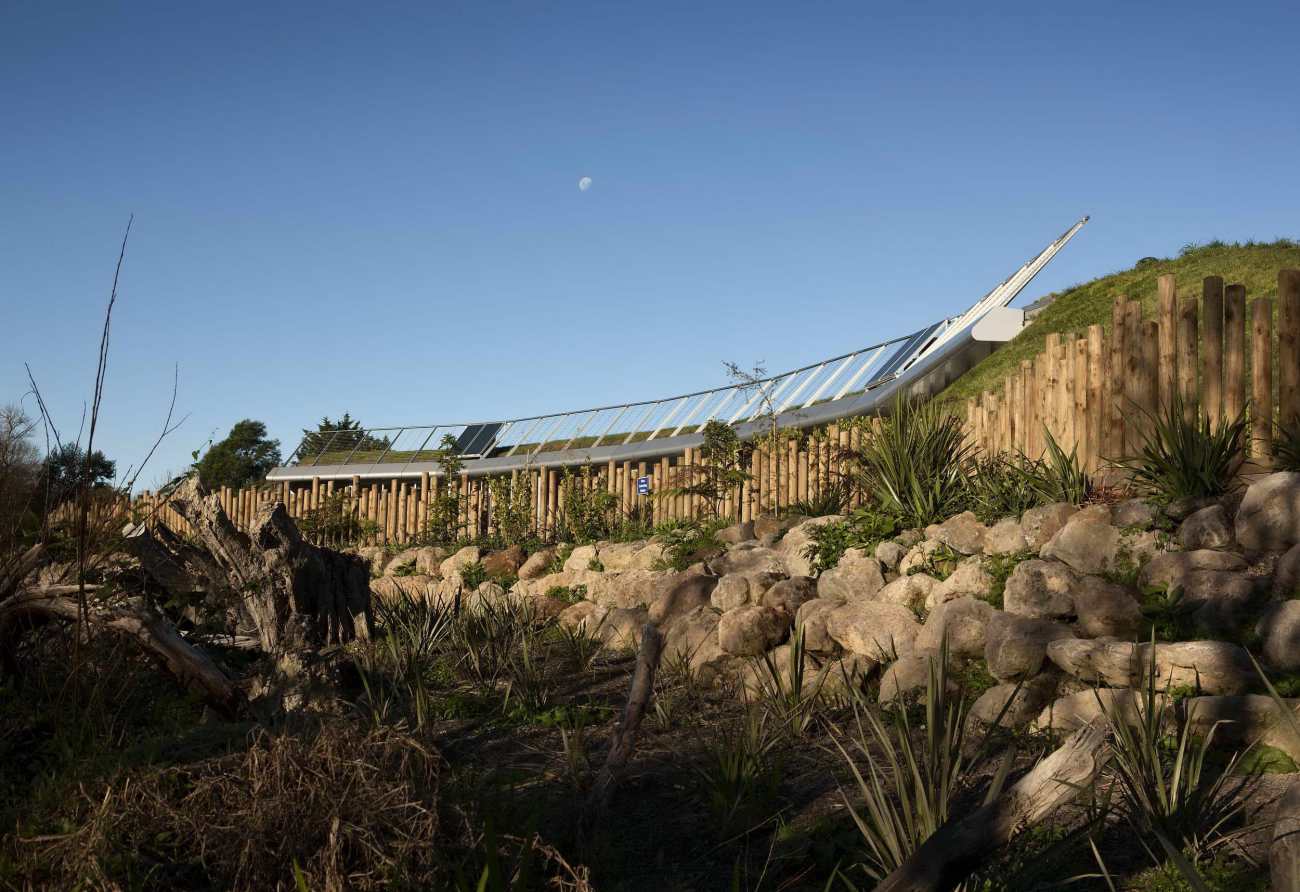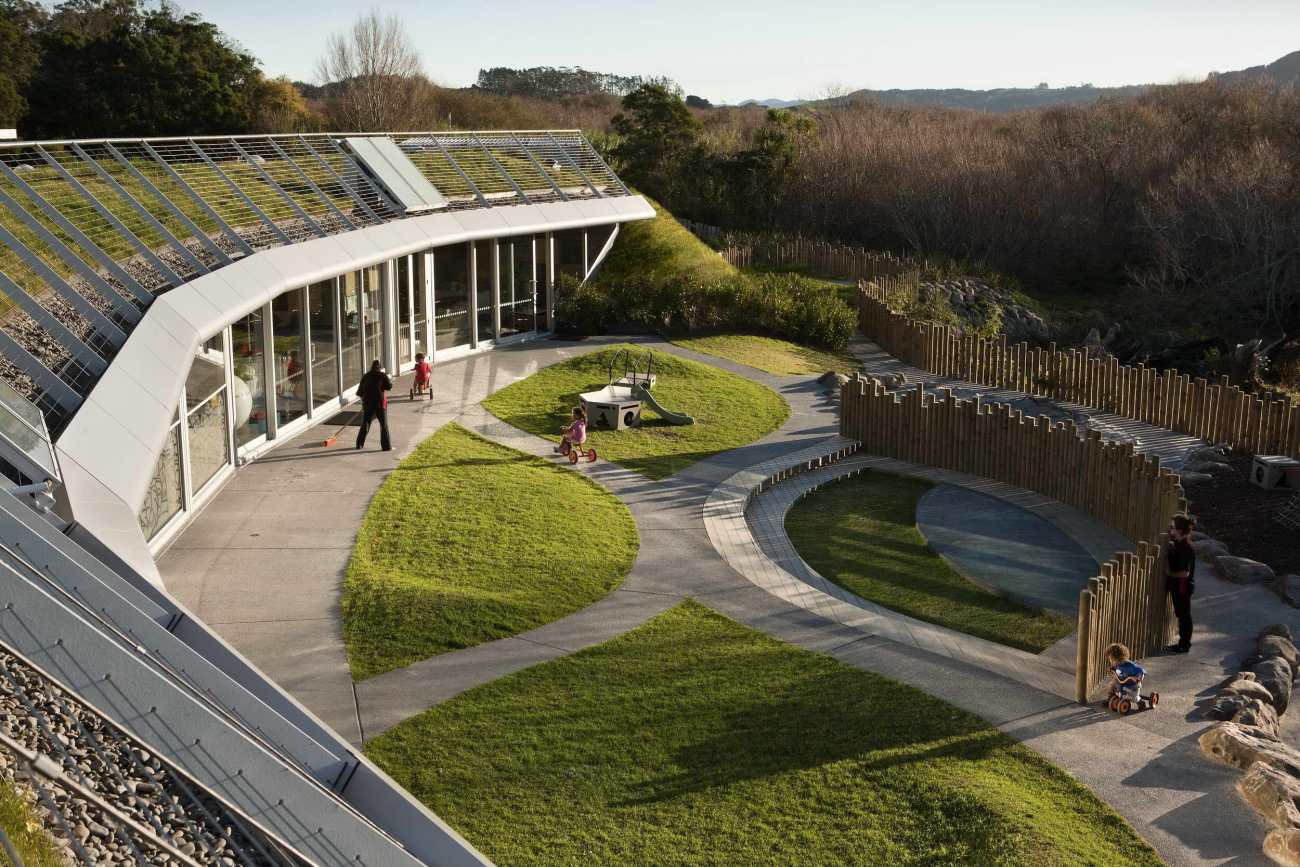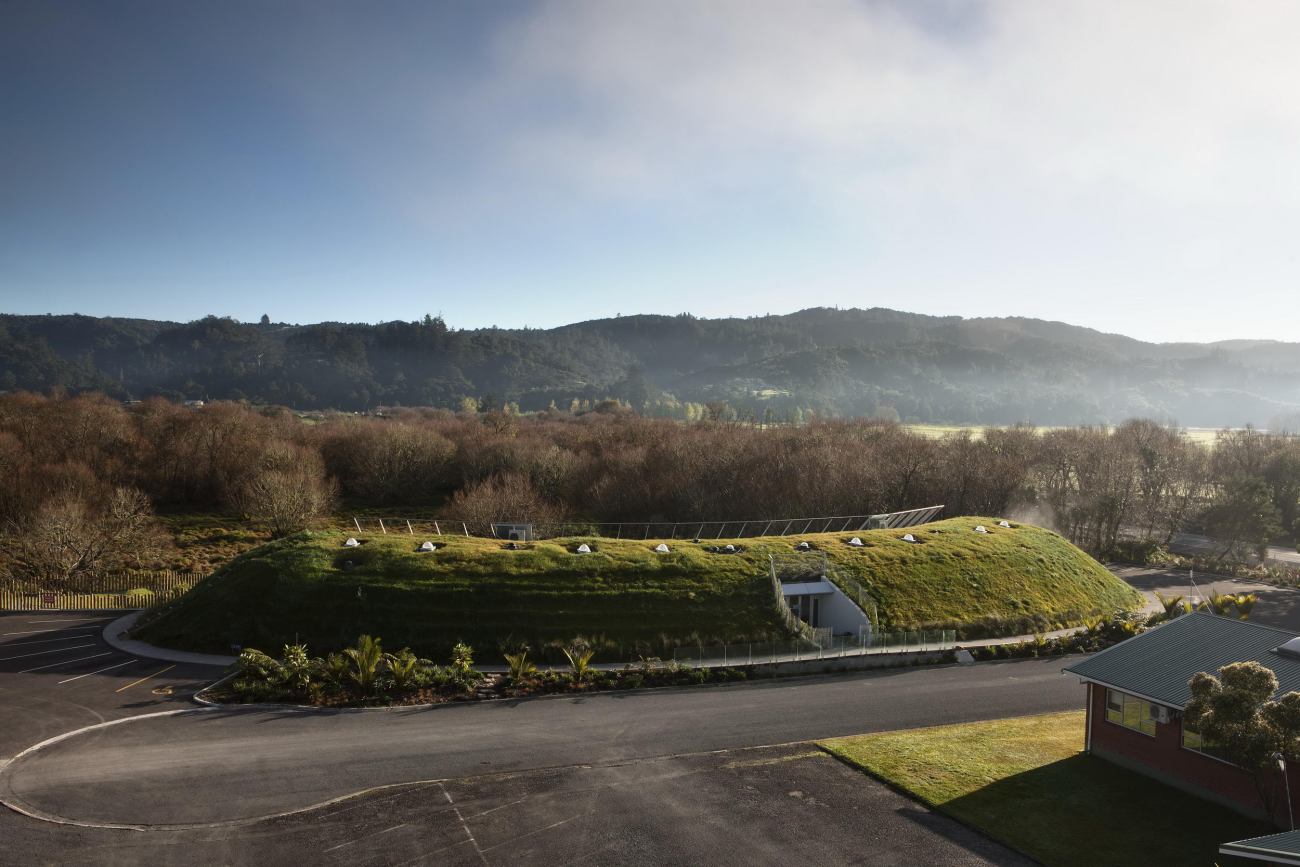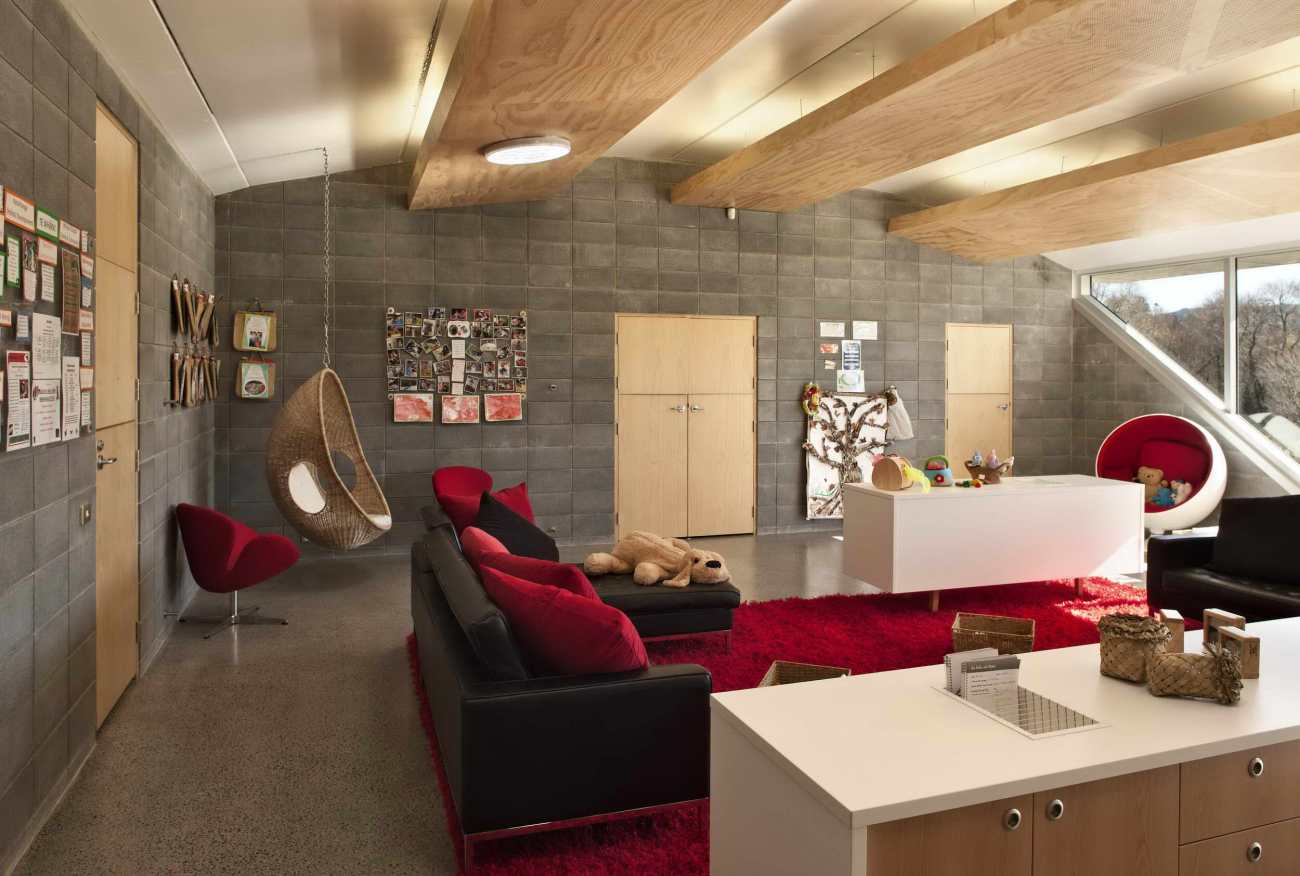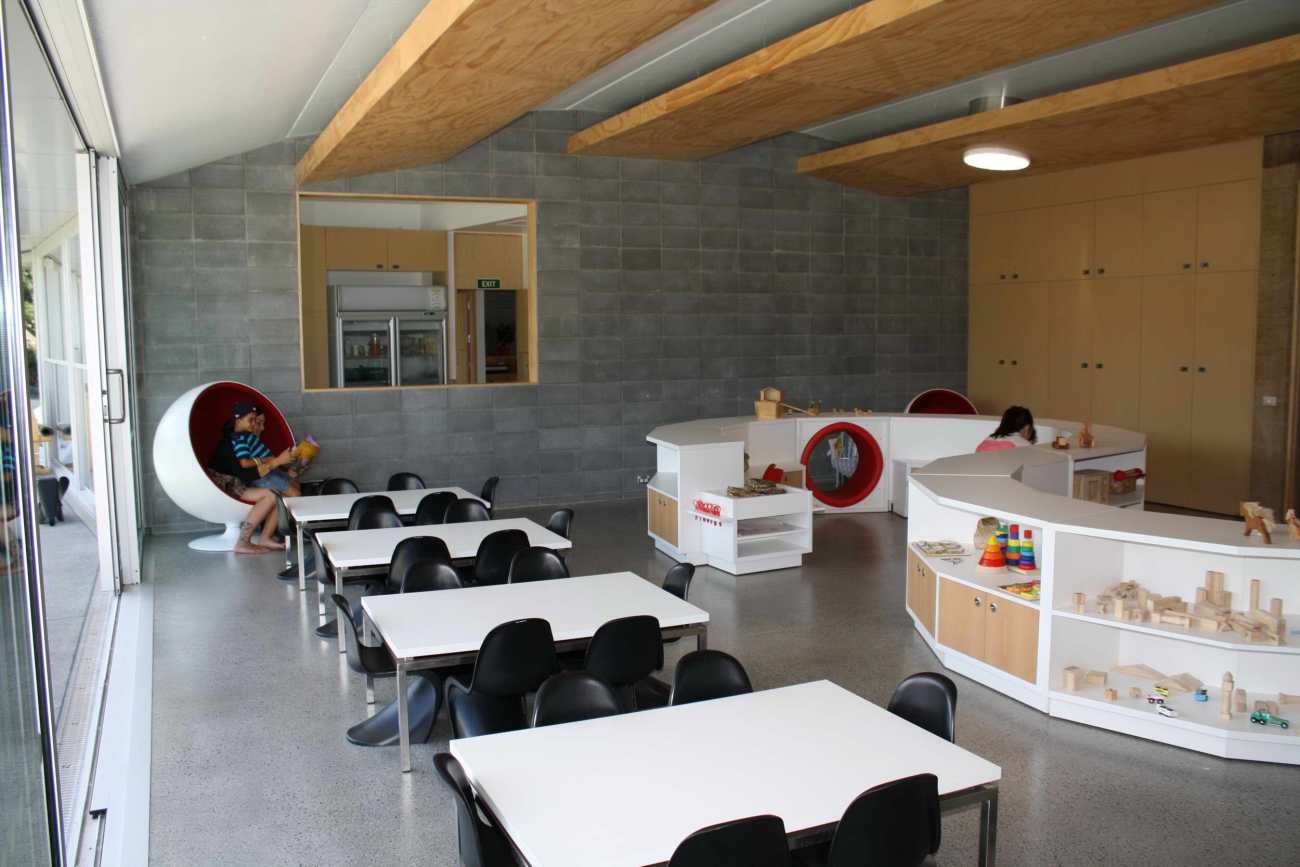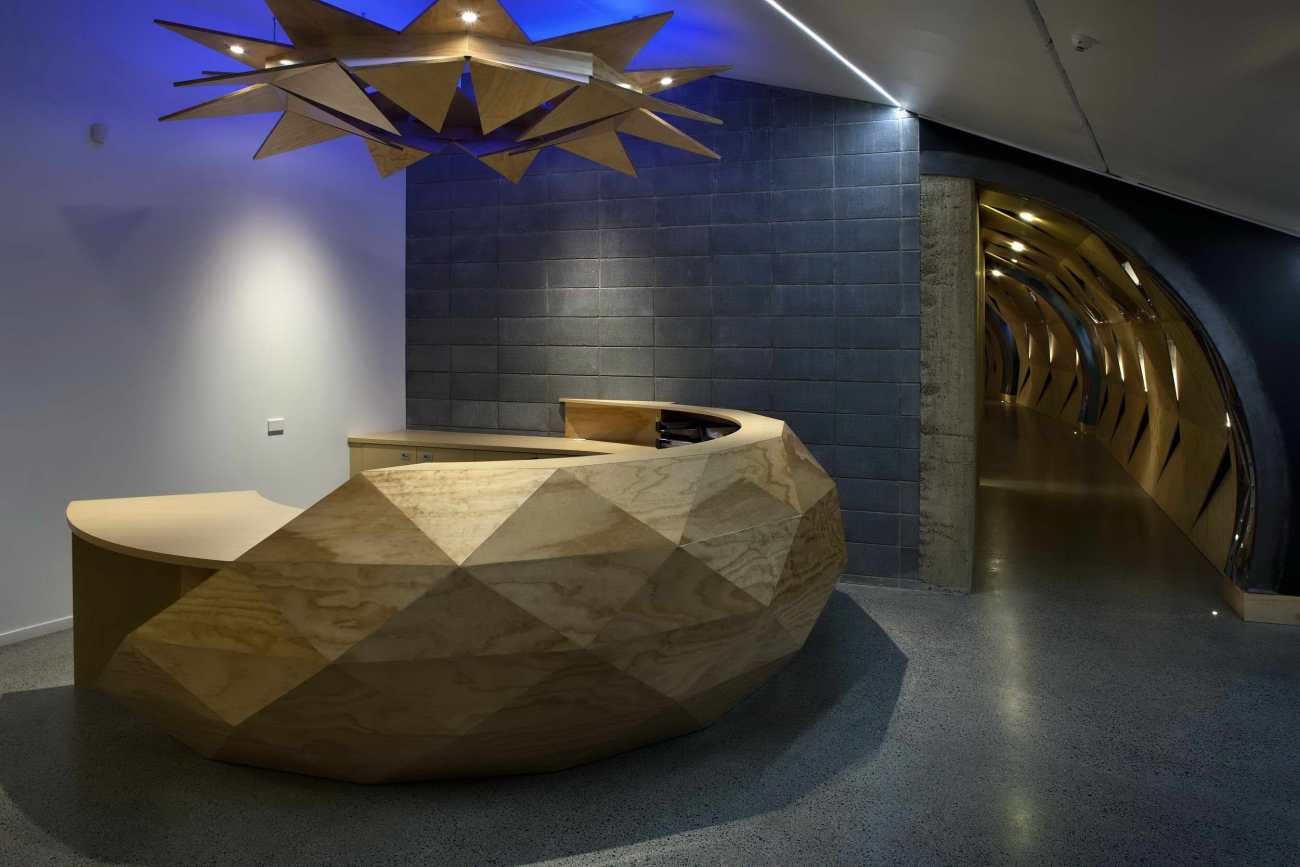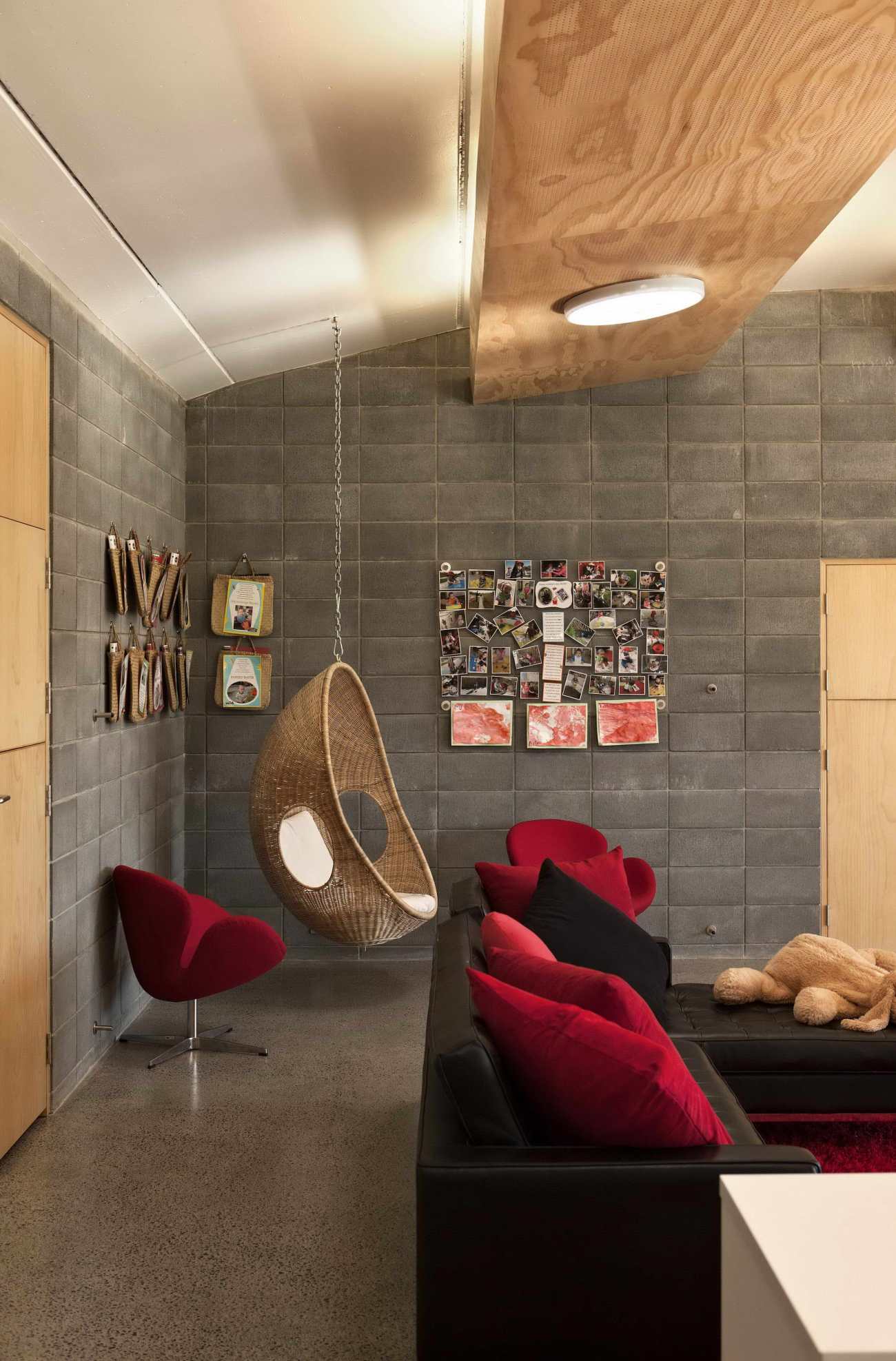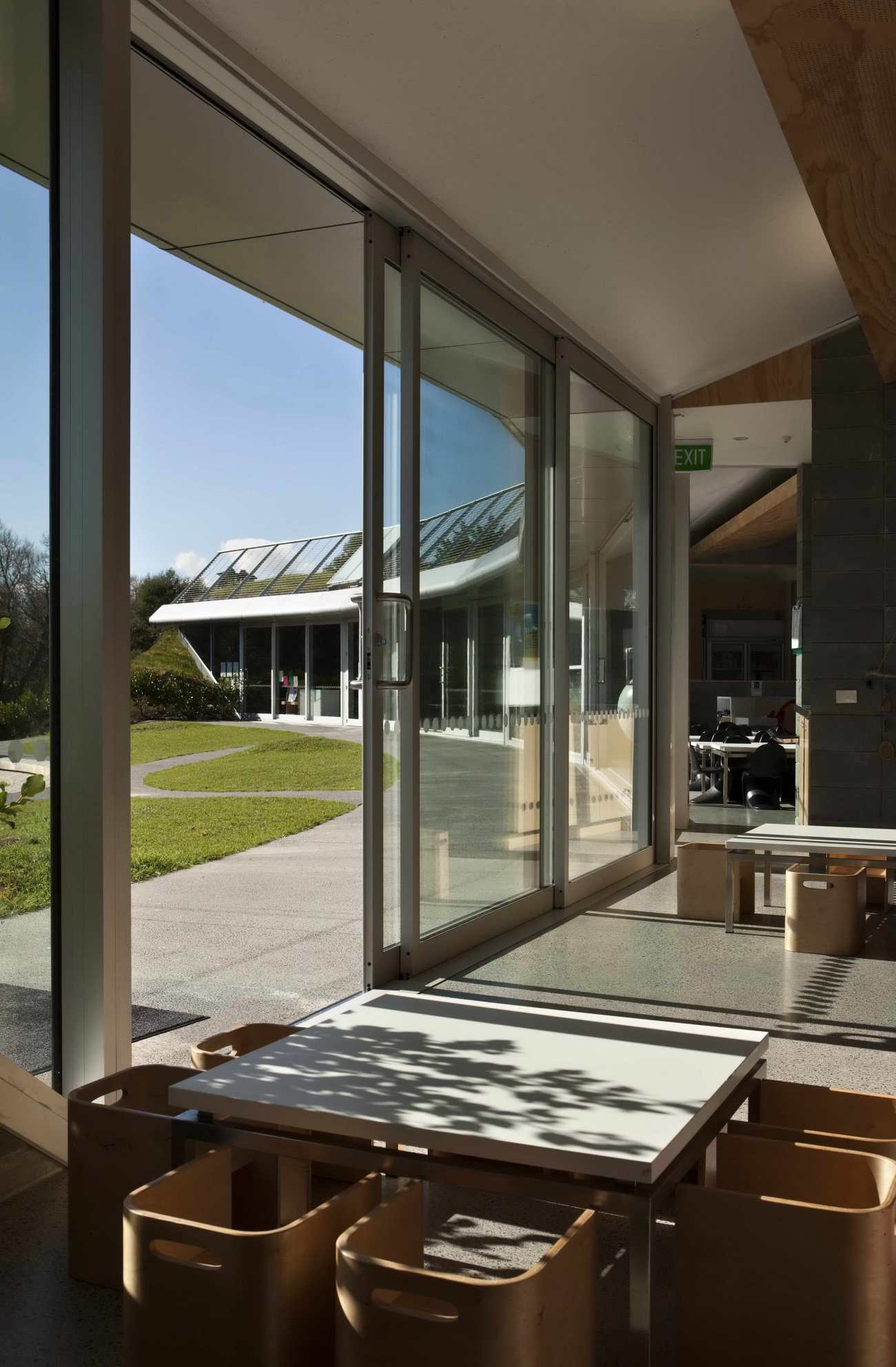| 公司: | Collingridge and Smith Architects | 类型: | 建筑 |
|---|---|---|---|
| 地区: | 新西兰 | 标签: | 学校 | 文化空间 |
该设计是为新西兰Kawakawa的一个毛利部落(Ngāti Hine)设计的早教中心。设计要求该建筑不仅要能容纳教室等空间,而且要能在对环境影响最小的情况下向他们传授他们的文化和习俗。
This design is an early childhood building for a Maori tribe (Ngāti Hine) in Kawakawa, New Zealand. The brief called for a building which would not only accommodate the clients tamariki (children) but teach them about their culture and customs on a daily basis whilst having a minimal impact on the environment.
设计理念是基于毛利人关于生命的传说,即所有的生命都诞生于Papatūānuku(大地之母)的子宫,毛利语中的陆地(whenua)一词也意味着胎盘。
Our concept for the building is based on the Maori tradition that all life is born from the womb of Papatūānuku (earth mother), under the sea: the word for land (whenua) in Maori also means placenta.
毛利人的建筑在历史上具有丰富的象征意义,因此设计的构思是将土地塑造成一个类似子宫的形状,建筑的形成就像一个婴儿在里面:建筑从土地上生长出来。
Maori architecture is historically rich in symbolism, and so the design is conceived by shaping the land into a womb-like form, with the building forming just like a baby within: the building literally grows out of the land.
建筑的唯一开口是沿着北面的立面,是土地上的一个切口。这个切口象征性地代表着剖腹产,他们的祖先Hine ā Maru是有记录的第一位剖腹产的毛利妇女,并在大约600年前的手术中存活下来。孩子们正是从这个开口处象征性地进入"光的世界",在那里玩耍。
The only opening to the building is along the north facade, and reads as a cut in the earth. This cut symbolically represents the caesarian birth through which all of the clients iwi (tribe) take their lineage: their ancestor Hine ā Maru was the first recorded Maori woman to deliver a child by caesarian section and survive the procedure about 600 years ago. It is from this opening that the children symbolically enter the ‘world of light’, where they play.
建筑物位于沼泽地上,"子宫"的外形看起来像一座岛屿,这与所有陆地都诞生于海底的传统有关。一座桥形成了通往岛屿的通道,塑造了部落的瓦卡(独木舟)Ngātokimatawhaorua,代表了部落先民从哈瓦伊基到奥特亚罗亚(新西兰)的旅程。
The building is located on marshy ground, with the ‘womb-like form’ appearing as an island, relating back to the tradition that all land is born from under the sea. A bridge is formed to give access to the island, which is symbolically shaped into the tribal waka (canoe) Ngātokimatawhaorua, representing the journey of the tribes forefathers from Hawaiki to Aotearoa (NZ).
建筑物上堆积的泥土象征着Ngāti Hine-pukerau(当地的地名)。土层以下的内部代表了附近埋葬祖先的Waiomio洞穴,以及祖先Kawiti巧妙地利用地下掩体作为防御工事。圆形的设计形式也从传统的pā中获得灵感。
The earth that mounds up over the building makes reference to Ngāti Hine-pukerau (Ngāti Hine of a hundred hills-a local name derived from the landscape). The interior, below the earth, represents the nearby Waiomio caves where the ancestors lay buried and the Ruapekapeka pā (fortification) where the ancestor Kawiti cleverly used underground shelters as defence from attack. The circular form of the design also draws inspiration from traditional pā.
设计重要的是将被动式环境设计特征融入建筑中,因此所有的 "象征性"特征都具有许多环保目的:所有玻璃都朝向北方,以获得最大限度的太阳能,而超级隔热的土质屋顶使热量损失最小,南面放置的非加热循环空间进一步帮助了热量损失。为了进一步提高内部舒适度,裸露的混凝土结构和自然通风使建筑在夏季被动冷却,冬季由太阳能热水地板系统提供最小的供暖。所有空间都是自然采光,白天不需要额外的电力照明。所有的污水都经过现场处理,清洁营养丰富的水用于灌溉屋顶绿化。
It was equally important to integrate passive environmental design features into the building, so all ‘symbolic’ features have many environmental purposes: all glazing is oriented to the north for maximum solar gain, whilst the super-insulated earth roof results in minimal heat loss, which is further assisted by the unheated circulation space placed to the south. For further internal comfort, exposed concrete construction and natural ventilation allows the building to be passively cooled in summer, with minimal heating back-up in winter provided by a solar hot water underfloor system. All spaces are naturally daylit and will need no additional electrical lighting during the daytime. All blackwater is treated on site and the clean nutrient rich water is used to irrigate the green roof.
该设计获得了新西兰绿色建筑委员会的6级绿星教育评级(最高级别),使其成为新西兰仅有的三座获得这一荣誉的建筑之一,也是整个澳大拉西亚地区唯一的绿星评级早教中心。Te Mirumiru早教中心已获得11个国际和国家奖项,2014年获得世界绿色建筑委员会的 "可持续设计领导力奖",是整个亚太地区唯一获此殊荣的建筑。
The design has received a 6 Greenstar Education Rating (highest possible) from the New Zealand Green Building Council making it one of only three buildings in NZ to receive this accolade, and is the only Greenstar rated early childhood centre in the whole of Australasia. Te Mirumiru early childhood centre has received 11 international and national awards, culminating in 2014 with the World Green Building Council’s Leadership in Sustainable Design Award, the only building in the whole of the Asia Pacific region to receive such a title.
Project name: Te Mirumiru Early Childhood Education Centre, Kawakawa
Company name: Collingridge and Smith Architects
Website: http://collingridgeandsmitharchitects.com/
Contact e-mail: phil@collingridgeandsmitharchitects.com
Project location: Kawakawa, Northland New Zealand.
Completion Year: 2012
Building area (m²): 572m2
Other participants: Phil Smith, Grayson Wanda, Chloe Pratt
Photo credits: Simon Devitt
更新日期:2021-04-07 14:34:17
非常感谢 Collingridge and Smith Architects 带来的精彩项目, 查阅更多Appreciations towards Collingridge and Smith Architects for sharing wonderful work on hhlloo. Click to see more works!
